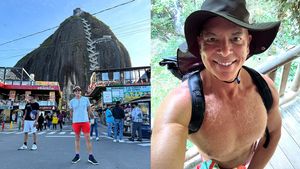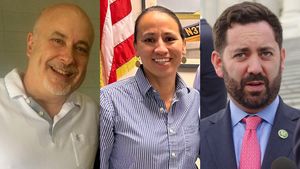The HIV cure rollercoaster came to a screeching halt at this summer's 21st Annual International AIDS Conference (AIDS 2014) with a scientific consensus for the need to avoid the reoccurrence of the media circus of the past year. With the much touted ‘Mississippi Baby’ and the ‘Boston Patients’ proving to be only temporary remissions, it was largely decided by the scientific community to keep rare, individual successes low key and wait a significantly longer period of time before stating success. This along with disappointing HDAC data and the stark fact that achieving a cure for HIV (if there is to be one) is still very far from our grasp, means that HIV eradication research should be broadly based, encompassing many different strategies, drugs and ideas.
An eradication cure for all people with HIV is a daunting endeavor and many believe we will develop a functional cure or strategy for 'HIV remission' rather than a way to actually eradicate HIV from the body. However, as some researchers attempt to fully understand HIV latent reservoirs, which are believed to be the biggest obstacle to development of a cure, others focus on promising strategies for a cure such as host restrictive factors that would enable the body's natural defenses to overcome HIV.
Viral host restriction factors (HRFs) of retroviruses, such as HIV, are cellular proteins that inhibit viral replication by intervening at various steps of the replication process. They disable certain elements required for a virus’s life cycle, crippling the virus and preventing infection of cells. One HRF, APOBEC3G (A3G), is part of the APOBEC superfamily of proteins that play an important role in innate antiviral immunity. A3G interferes with reverse transcriptase and viral replication by inducing numerous mutations. These hypermutations destroy the ability of HIV to code for its viral proteins, resulting in nonviable viruses. However, HIV has evolved a mechanism to evade A3G.
HIV encodes a protein known as Vif that tricks cells into degrading A3G. This shields the HIV genome from the hypermutations that A3G causes, allowing HIV to successfully replicate. Research into methodologies for protecting A3G that would allow it to perform its inhibitory function against HIV is needed to facilitate the development of compounds based on this approach, both as promising antiretroviral agents and as part of an eradication strategy.
For the past 30 years the drug industry and the NIH have been opposed to targeting host proteins so that funds and attention could be paid solely to traditional antiretroviral solutions. We now have a changed rubric and are in a position where considering host restriction factors is an obvious next step. Of all the host proteins or pathways, A3G is the only HRF whose activity can be manipulated without predictable toxicity to the host. OyaGen, a biotechnology company based in Rochester, is developing a Vif dimerization antagonist. This antagonist is both an eradication and antiviral strategy based on HRFs that enables A3G antiviral activity by disrupting RNA from binding to A3G and inhibits Vif-dependent degradation of A3G. This enables A3G incorporation with virions and the subsequent deadly hypermutations.
Several researchers are examining the potential of A3G to fight HIV. Dr. Harold Smith is a professor at the University of Rochester and the founder of OyaGen who has developed several compounds that disable Vif and allow A3G to prevent HIV from infecting cells, stopping the virus in its tracks. A more extensive understanding of how important A3G modulation is to controlling HIV can be seen in a great video on YouTube.
"Vif dimerization antagonists and A3G agonists disable Vif, allowing A3G to carry out its function at its maximum capacity of crippling HIV,” explains Dr. Smith of the strategy of two new classes of drugs based on targeting A3G. “These studies have been funded by the NIH and the Bill and Melinda Gates Foundation. Vif dimerization antagonists and A3G agonists, as well as additional research into A3G, are promising approaches that should be afforded the same support as strategies such as HDAC inhibitors. No virus can survive without Vif. A combination of a Vif antagonist with an A3G activator ensures that cellular A3G has the best potential for being enzymatically active. As such, these two new classes of drugs will stop a spreading infection, overcome all drug resistant strains, important for salvage therapy patients, and could provide a shield of host restriction as part of PrEP. Reservoirs are not actively replicating and therefore reverse transcription and A3G during this process is not possible in these cells. It is, however, extremely critical to appreciate that activation of reservoirs lead to late viral protein expression, including Vif, and release of virions. Activating the reservoirs and hoping that inflammation will eliminate the cells that harbor integrated virus comes with the consequence of viremia, which for many patients may be unchecked due to drug resistant virus and may reestablish new reservoirs thought the induced viremia".
This approach will produce a firewall in these activated reservoir cells where Vif antagonists will protect A3G from the newly expressed Vif and thereby enable A3G to enter the virions before they leave the reservoir. Dr. Smith predicts this will stop the spread of infection.
Vif dimerization antagonists and A3G agonists entered preclinical testing phase in 2013 and Dr. Smith predicts completion of animal studies by the end of 2014 with the potential of entering clinical trials in 2015.
An abstract entitled “Drug Leads that Inhibit Vif and Enable APOBEC3G are Broadly Neutralizing of HIV1 Clades and Drug-resistant Strains” suggests that using Vif directed A3G would destroy HIV and disable it from reproducing and could be used as salvage therapy or to kill off activated reservoirs. This abstract was presented at the XX International AIDS Conference (AIDS 2014).
Recent announcements by the NIH regarding novel HIV eradication research have included A3G as a potential eradication strategy agent. However, A3G research remains comparatively underfunded and less celebrated. These and other eradication strategies need adequate support to secure the completion of animal and human studies. While a wider range of therapeutic approaches that can advance eradication research exist, funding efforts that support innovation need to be accommodated to advance these investigations.
“Such host defense mechanisms could involve entry inhibitors, an already approved therapeutic class, and this new class of activators of the innate anti-infective mechanism afforded by the cytidine deaminase family of genes, of which A3G is a key player. HIV has evolved to bypass this mechanism and these compounds level the playing field in order to achieve viral eradication", said Dr. Richard Ogden, Executive Vice President of Strategic Development for OyaGen. “Pharma is already realizing that the new limits on current therapy are not to do with efficacy under conditions of optimal adherence, but rather on the daunting task of improving world-wide outcomes with current suppressive regimens. Cure strategies have risen to the forefront of scientific research and the industry should be actively seeking to support the various lines of research that are showing promise in early stages of development.”
As more research shows the potential of preserving and stimulating A3G in eradication studies, therapeutic strategies being investigated by small biotechnology companies like OyaGen remain dependent on community advocates to ensure the means to do this critical research are enhanced. It is time to hold political commitments to task. As stated by Congresswoman Nancy Pelosi at the XIX International AIDS Conference (AIDS 2012), “We have an obligation to be innovative and courageous in our thinking. Where there is scientific opportunity, we have a moral obligation to fund it.”













































































